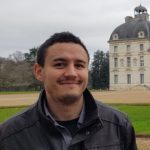Link to Pubmed [PMID] – 30074988
PLoS ONE 2018;13(8):e0201174
BACKGROUND: The human intestinal microbiota contains a vast community of microorganisms increasingly studied using high-throughput DNA sequencing. Standardized protocols for storage and DNA extraction from fecal samples have been established mostly for bacterial microbiota analysis. Here, we investigated the impact of storage and DNA extraction on bacterial and fungal community structures detected concomitantly.
METHODS: Fecal samples from healthy adults were stored at -80°C as such or diluted in RNAlater® and subjected to 2 extraction protocols with mechanical lysis: the Powersoil® MoBio kit or the International Human Microbiota Standard (IHMS) Protocol Q. Libraries of the 12 samples targeting the V3-V4 16S and the ITS1 regions were prepared using Metabiote® (Genoscreen) and sequenced on GS-FLX-454. Sequencing data were analysed using SHAMAN (http://shaman.pasteur.fr/). The bacterial and fungal microbiota were compared in terms of diversity and relative abundance.
RESULTS: We obtained 171869 and 199089 quality-controlled reads for 16S and ITS, respectively. All 16S reads were assigned to 41 bacterial genera; only 52% of ITS reads were assigned to 40 fungal genera/section. Rarefaction curves were satisfactory in 3/3 and 2/3 subjects for 16S and ITS, respectively. PCoA showed important inter-individual variability of intestinal microbiota largely overweighing the effect of storage or extraction. Storage in RNAlater® impacted (downward trend) the relative abundances of 7/41 bacterial and 6/40 fungal taxa, while extraction impacted randomly 18/41 bacterial taxa and 1/40 fungal taxon.
CONCLUSION: Our results showed that RNAlater® moderately impacts bacterial or fungal community structures, while extraction significantly influences the bacterial composition. For combined bacterial and fungal intestinal microbiota analysis, immediate sample freezing should be preferred when feasible, but storage in RNAlater® remains an option under unfavourable conditions or for concomitant metatranscriptomic analysis; and extraction should rely on protocols validated for bacterial analysis, such as IHMS Protocol Q, and including a powerful mechanical lysis, essential for fungal extraction.






